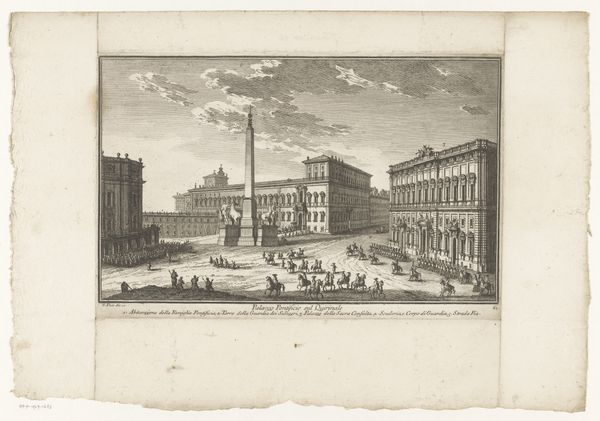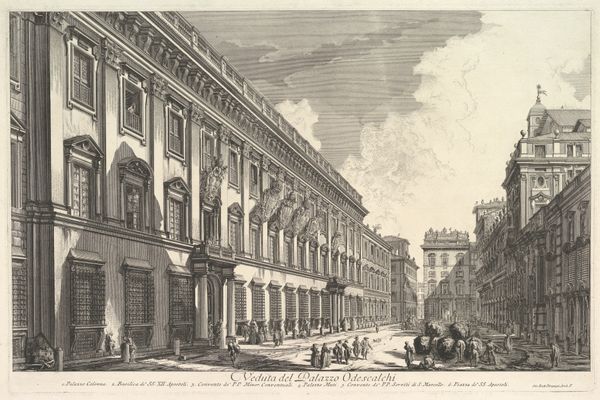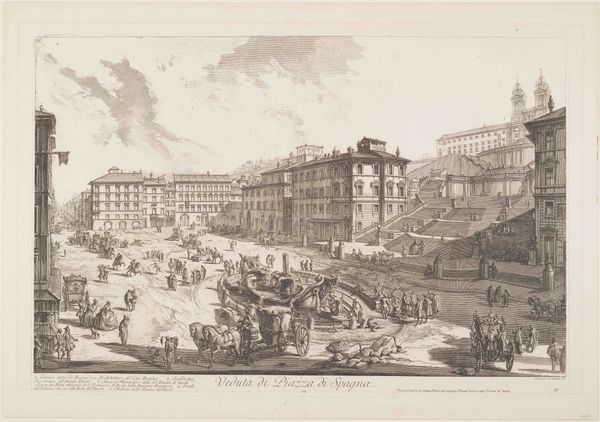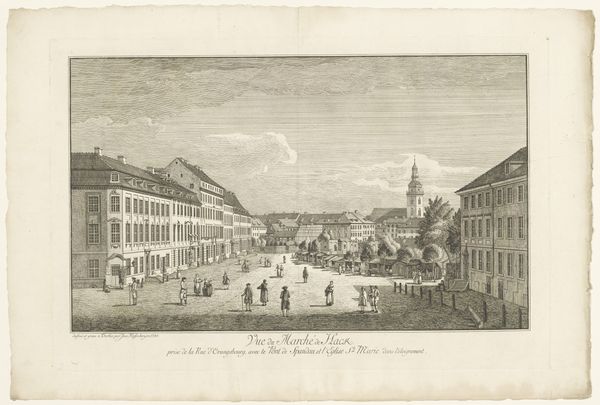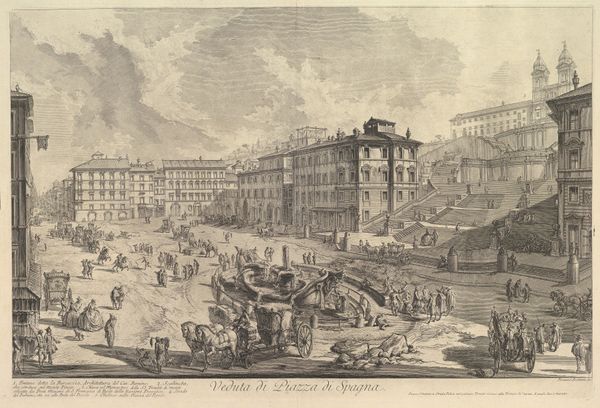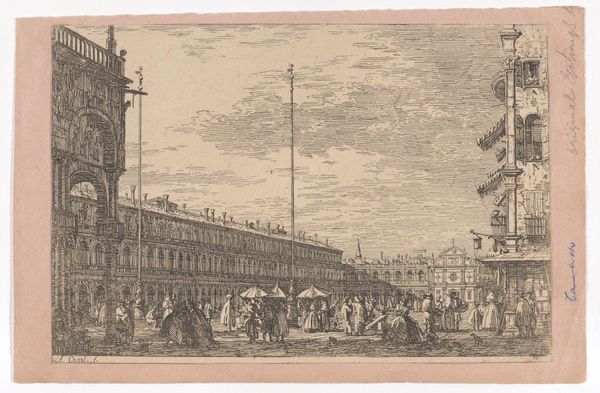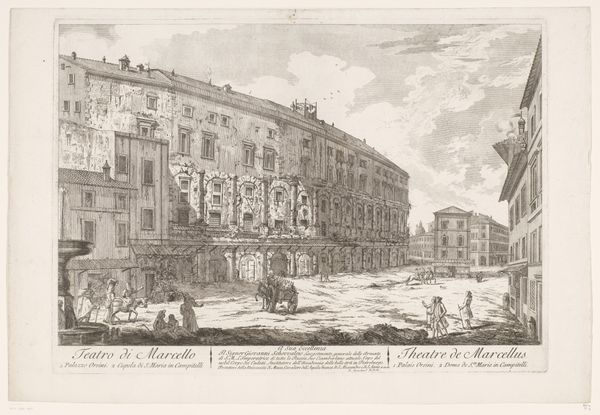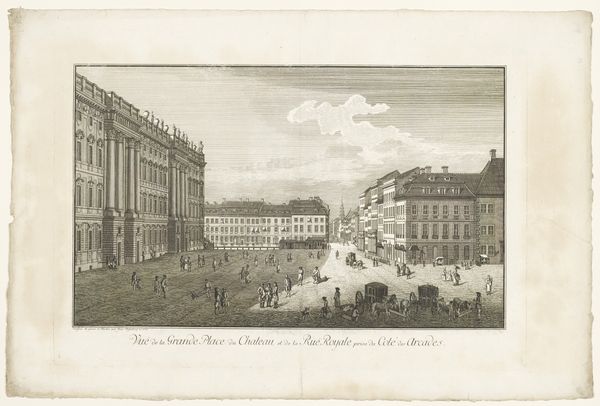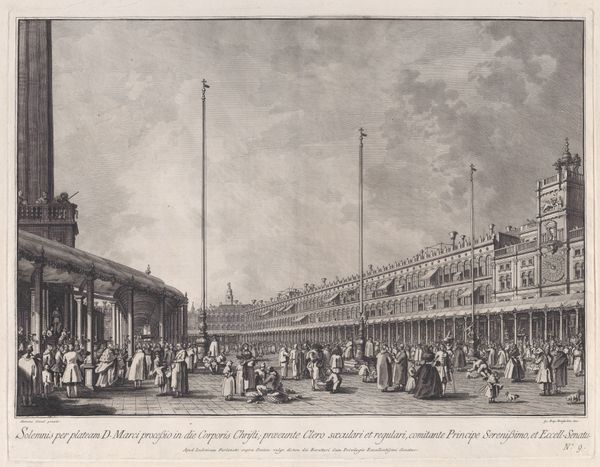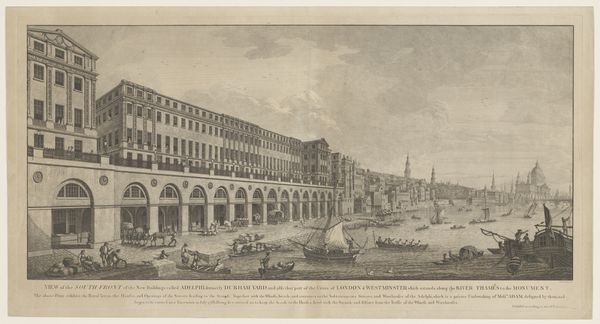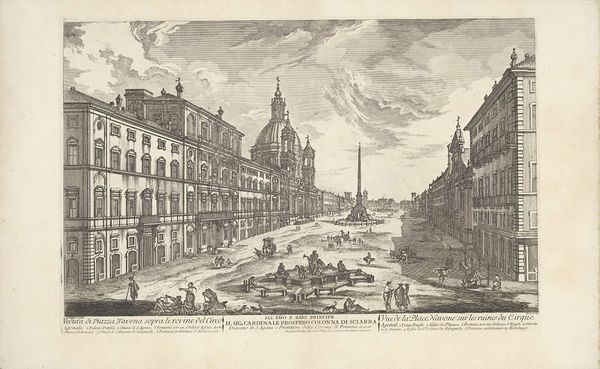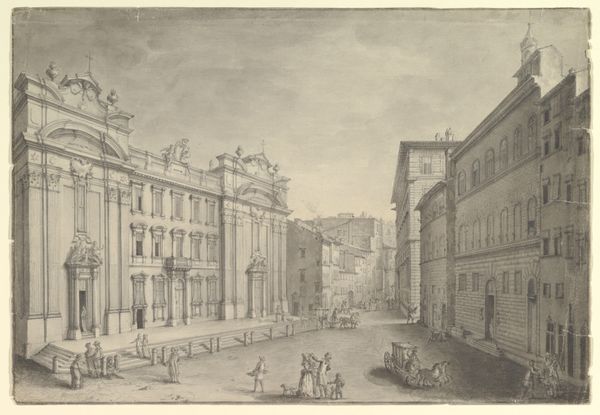
View of Piazza San Marco, with the church of San Geminiano at the far end, and figures and market stalls in the foreground 1763
0:00
0:00
Dimensions: Plate: 12 11/16 × 18 1/4 in. (32.3 × 46.4 cm) Sheet: 13 11/16 × 18 9/16 in. (34.8 × 47.1 cm)
Copyright: Public Domain
This print of the Piazza San Marco was made by Giovanni Battista Brustolon in the 1700s, using etching and engraving. Look closely and you'll see how the varying line weights create depth. The process of etching involves covering a metal plate with a waxy ground, then scratching away at the surface to expose the metal. Acid is then applied, biting into the exposed areas. Engraving, meanwhile, uses a tool to directly incise lines into the plate. Both methods are labor-intensive, requiring immense skill to render detail. Brustolon would have needed to be precise to capture the perspective and architectural details, as well as the lively atmosphere of the marketplace. Prints like this were often made for commercial purposes, feeding a growing demand for images of famous places. The work involved long hours of careful labor, intended for a rising class of consumers. Next time you see a print, consider the amount of work that went into its making, and how materials and making processes can carry cultural significance.
Comments
No comments
Be the first to comment and join the conversation on the ultimate creative platform.
